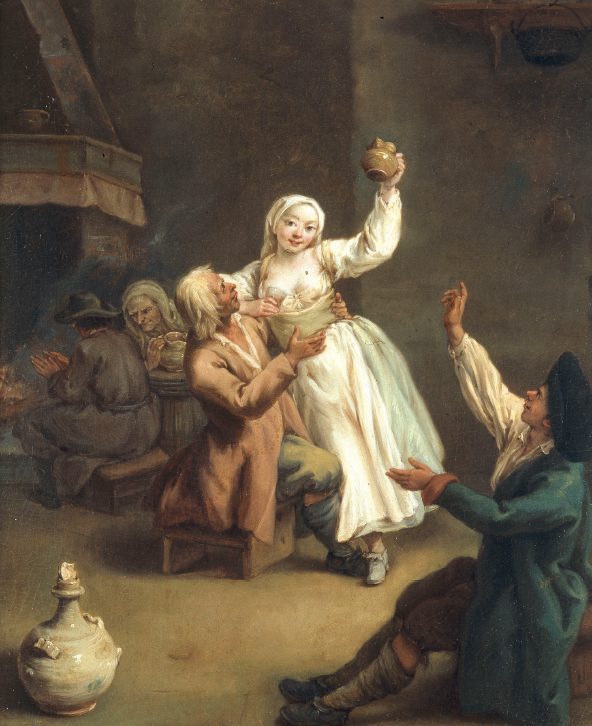Work Away from Home

Many young people worked within their families until they could start their own households. Many others left home to work elsewhere. In the trades, a lad would enter apprenticeship around age fifteen and finish in his late teens or early twenties. During that time, he would not be permitted to marry. An apprentice from a rural village would typically move to a city or town to learn a trade. If he was lucky and had connections, he might eventually be admitted to a guild and establish his economic independence. Many poor families could not afford apprenticeships for their sons. Without craft skills, these youths drifted from one tough job to another.
Many adolescent girls also left their families to work. The range of opportunities open to them was more limited, however. Apprenticeship was sometimes available with mistresses in traditionally female occupations like seamstress, linen draper, or midwife. With the growth in production of finished goods for the emerging consumer economy during the eighteenth century (see Chapter 17), demand rose for skilled female labor and, with it, greater opportunities for women.
Service in another family’s household was by far the most common job for girls, and even middle-
Male apprentices told similar tales of abuse and they shared the legal status of “servant” with housemaids, but they were far less vulnerable to the sexual exploitation that threatened young girls. In theory, domestic service offered a girl protection and security in a new family. But in practice she was often the easy prey of a lecherous master or his sons or friends. If the girl became pregnant, she could be fired and thrown out in disgrace. Many families could not or would not accept such a girl back into the home. Forced to make their own way, these girls had no choice but to turn to a harsh life of prostitution (see "Sex on the Margins of Society") and petty thievery.